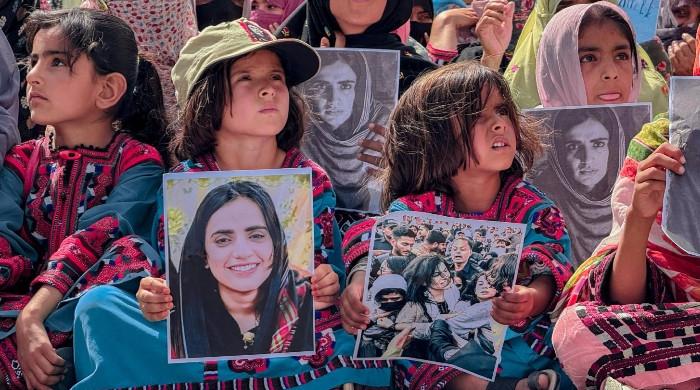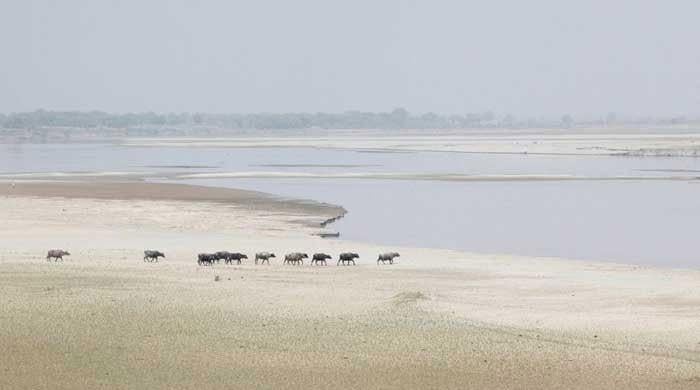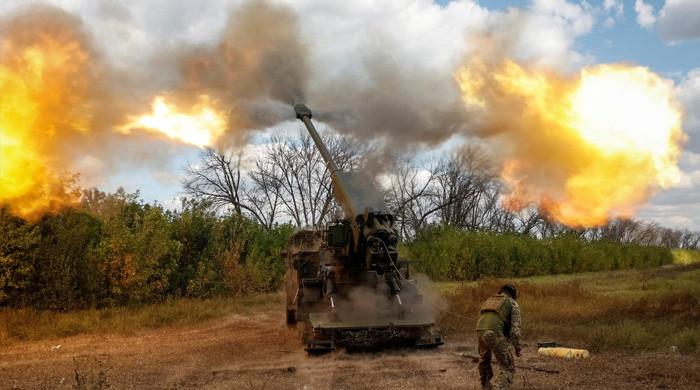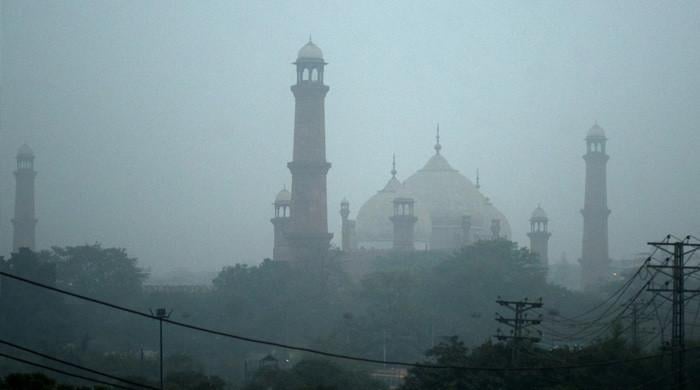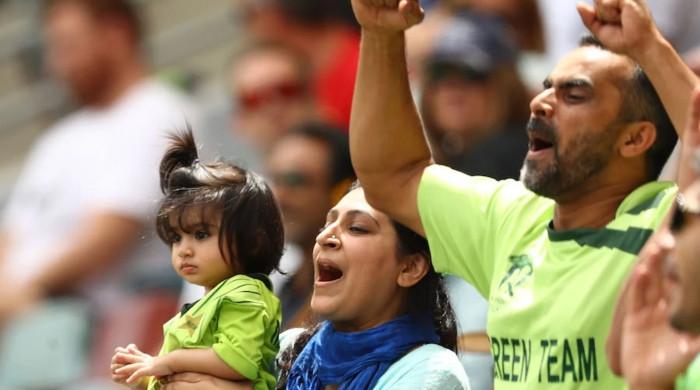Pakistan: A cross-cultural miracle
From East to West, the cultures have evolved over centuries and looking back at history helps us understand the diversity
October 22, 2022

Since the beginning of our existence, humans have preferred to come together for their survival. This basic instinct defines us as social creatures. Our ancestors were the creators of societies where groups of people sharing common beliefs came together. Over time, societies further evolved into larger groups and their shared beliefs, values and practices gave birth to the cultures we see in our modern world today.
Some cultural universals are common among all societies and are followed as unwritten rules globally; like the idea of bearing offspring and raising them together in a family system, with basic human values. The diversity in cultural differences depends upon the geography, religious beliefs and practices, ethnicity, and etiquette norms of the region of any particular society.
From East to West, the cultures have evolved over centuries and looking back at history helps us understand the diversity. Even in Asia, the culture today has its roots deeply embedded in time.
Pakistan became an independent state only 75 years ago but our cultural history is more than 5,000 years old. What we witness today has its roots coming from the era of Aryans and Dravidians, the old Indus valley civilisation, the invaders from the West who repeatedly conquered this land and of course the attempt at colonisation by the English.
The oldest culture we still practice today is farming. Being an agricultural land situated near the banks of the Indus, farming and producing our crop has been handed down by our ancestors. The farming techniques may have evolved over centuries with modern technology making way for better yields but the idea and celebrations of harvesting the crop are implanted in our cultural roots. From crops like rice, wheat, and cotton of Punjab & Sindh, to fresh exotic fruits and dry fruits of Balochistan and KPK, Pakistan produces an unparalleled yield of crops that are exported to the global markets.
“Food is culture. Food is identity; a footprint of what you are” – Lidia Bastianich
Food for us is a unifying tradition. Be it celebratory events like weddings, or consoling ones like funerals; we find comfort in food. Pakistani food is rich and spicy but is prepared differently according to our regional and provincial food customs. One cannot miss the Balochi Sajji, Sindhi Biryani, Punjab's Saag or the KP's mouthwatering Namkeen Gosht (salted meat). Just like us, our food culture has also evolved over the centuries. When it comes to serving food, hospitality is the cornerstone of almost all the household cultures in Pakistan. Our food and hospitality are the foundation of our immaculate culture.
When defining the culture of a certain region, you cannot overlook the attire. Being somewhat of a conservative society, which values modesty and humility, Pakistani people take pride in their national dress; Shalwar Qameez for men and Shalwar Qameez & Dupatta for women, the cuts of which vary through different regions of the country. The white gigantic turbans of Balochistan to Sindhi topee (cap) and Ajrak (shawl) of Sindh, the vibrant colours of attires we see in Punjab, to the waistcoat and the Patthani topees, and Gilgiti caps of the Northern areas.
Music has and will keep on playing an important role in our culture. It stands tested specifically for our folk music. The artefacts discovered in the excavations along the Indus Valley include instruments that date back to 5,000 years. Similarly, the statue of the famous “dancing girl” unearthed in Moenjodaro sheds light on the existence of dance as a part of the culture deeply rooted in the soil of the Land of Pure. The advent of various invaders over a long time has greatly influenced the music of this region. Our music has evolved gradually over the centuries. Our music has been influenced by that in the Middle East, Far East, Central Asia, Persia and most recently, the West. Each region has its folk music, which thrives on musical instruments some of which, are specific to particular areas. Alghoza and Been to Sindh.
Chimta and Garrwi to Punjab, Sarood and drums made from clay pots in KPK, while Balochistan has its own Donali and Benju instruments. Then along came the Sufis that promoted the culture of love and harmony and used music to bring people of different religions and ethnicity together. Be it Qawwali or the mystic poetry of Amer Khusro, the great Sufi poet, our cultural festivities like basant, holi, spring, weddings, etc are incomplete without his flavour of music that is now a cultural heritage of the sub-continent.
“Architecture belongs to culture, not civilization” – Alvar Aalto
A nation recognises itself through its history. Pakistan has various sites and regions dating back millions of years that stand out as a mix of various eras in architectural designs. These timeless marvels are preserved and reflect the Persian, invasion, Aryan invasion, the Mughal Empire, British Colonialism and most recently, the modern architectural movement. In ancient Hindu temples, one can witness the contour lines are horizontal, while in Muslim monuments these lines are visible vertical. Our architectural heritage also includes thousands of years old archaeological sites like Moenjodaro, Mehrgarh, and Harappa that are under the UNESCO umbrella.
The Mughal emperors were fond of building landmark architectural structures and their forts, grand mosques, huge gardens, and the famous Grand Trunk (GT) Road are evidence of this fact. The Persian, Turkish, and Central Asian influence is evident from the beautiful arches, courtyards, giant pillars, blue glazed tiles, blue and red tilework, glasswork, and calligraphic inscriptions on the buildings. These historical buildings carry a grandeur of their own which is unmatched to date. The other architectural chapter includes the buildings erected in the British Colonial period. Victorian-style architecture and buildings made from yellow stone slabs continue to be mesmerising and speak volumes about the efforts made by the British to help remind them of their home. The churches, state-owned institutions’ offices, the court buildings remind us of the Queen and her legacy in the subcontinent. The modern architectural movement has also influenced the architects here as the modern high-rises, the structural improvements and the use of modern technology have evolved for comfort, convenience, and optimum utilisation of space while giving it a modern facade. We have come a long way from houses made of mud and bricks to living in pre-fabricated buildings.
Language is the most important communication tool in any culture. Sharing and communicating ideas, thoughts and feelings are the bonding factors for a society. The cultural diversity in Pakistan is accompanied by diversity in languages spoken across the country. Pakistan has over 70 languages and Urdu is the national language spoken and understood nationally. Urdu was developed, rather evolved, as a language for the soldiers of different armies, where people of diverse languages came together and had to find a way to communicate effectively with each other and also with outsiders.
Hence Urdu is a mixture of Persian, Arabic, Hindi, Turkish, and Italian with words borrowed from English as well. Regional languages play a critical role in cultural recognition. Each province within the country speaks its regional language. Punjabi is the most widely spoken language in Pakistan with many dialects, while Sindhi, Pashtu, Siraiki, Balochi, Brahvi and Dari are among the other well-known ones. These languages carry with them a treasure of literary masterpieces. Along with Urdu, English is widely used in Urban Cities and is the lingua franca in offices and corporate culture.
“A people without the knowledge of their past, history, origin and culture is like a tree without roots” – Marcus Garbey
In the modern age of globalisation, societies and cultures are constantly evolving. Cultural patterns of different societies are naturally diverse from one another. Comparing any particular culture with our own either ethnocentrically (where one finds their own culture superior) or xenocentrically (where one finds the other culture superior to his own) is an asinine idea. Simply put, being aware of your own culture helps you connect with your heritage and roots. As global citizens, we all should be practising tolerance for other cultures while taking pride in our own.





